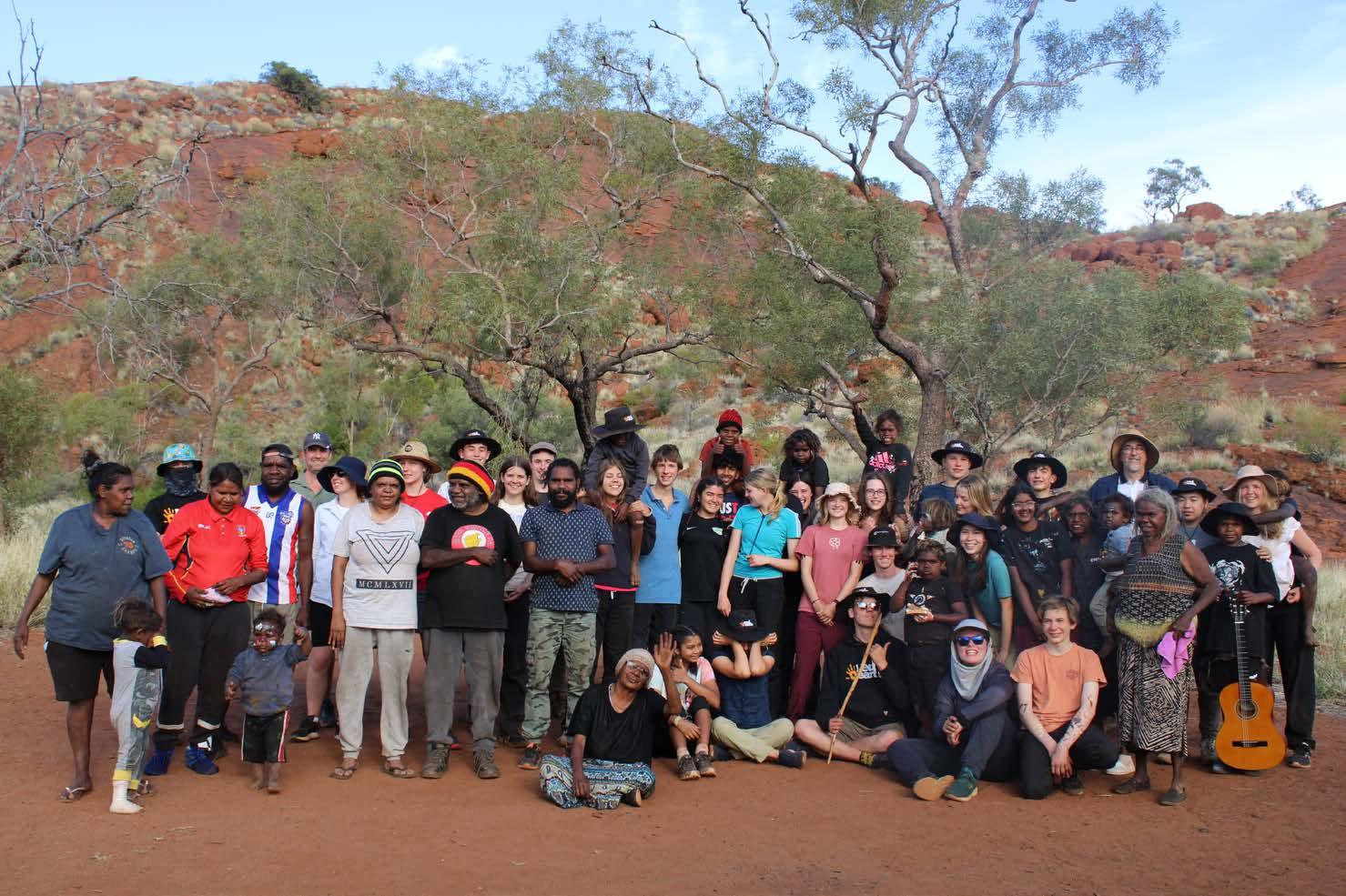
5 minute read
Connecting with culture
At 5am on 22 September, 26 students, two teachers and a pastor lined up at the Jetstar check-in counter, bound for Yulara, NT. Never would they have imagined that this journey they were about to embark on would take them to some of the most beautiful locations in the world, build life-long friendships, change their perspectives, teach them new skills, and involve so much red dirt.

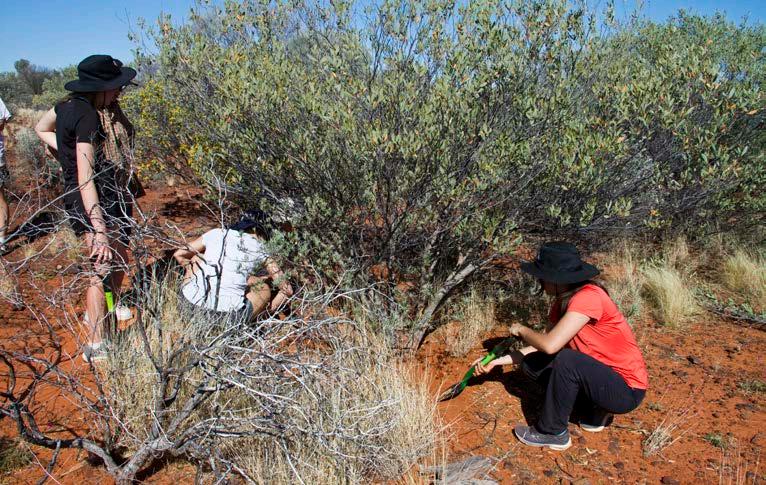

JULIA WRIGHT Curriculum Leader – Christian Studies The group's Indigenous Immersion itinerary included: exploring the natural landscape of Central Australia and the iconic Uluru, Kata Tjuta and Kings Canyon; visiting Alice Springs Lutheran Church to learn from Pastor Basil Schild about the significant history and continuing connection between Lutheran Ministry and Indigenous Spiritualities; and being welcomed onto the traditional homelands of Kurku and Fregon. At both homelands, the Traditional Owners were gracious in their hospitality and sharing of their impressive knowledge and skills. At Kurku, Traditional Owners, John and Lorraine Liddle, taught the students about their language and customs such as witchetty grub gathering (including cooking and eating), clap stick creating, and jewellery making. But perhaps it will be the discussion and reflections that they led throughout the activities and around the campfire about the past, present and future of our First Nations people that will be remembered most vividly. Heading into the second homeland of Fregon in the Anangu Pitjantjatjara Yankunytjatjara (APY) Lands of South Australia, the students were embraced by a community led by a group of strong matriarchs, who taught the students the art of basket weaving, spear making and how to participate in an Inma (traditional dance ceremony). Again, it will be the connections made across language, generations and culture that will be cherished. Sitting together and sharing culture enabled the students to recognise and understand that our First Nations Elders are the experts. They have been sustaining, and sustained by, the land for over 60,000 years, and the knowledge that we gain through listening to them will permeate our future decisions and contributions. Thank you to the students for their exceptional participation and engagement and to their accompanying teachers Mr Philip Alexander, Mrs Julia Wright and Pastor Tim. The most important thank you must be reserved for Ms Ingrid Rucinski, without whom this important immersion would not have been be possible.
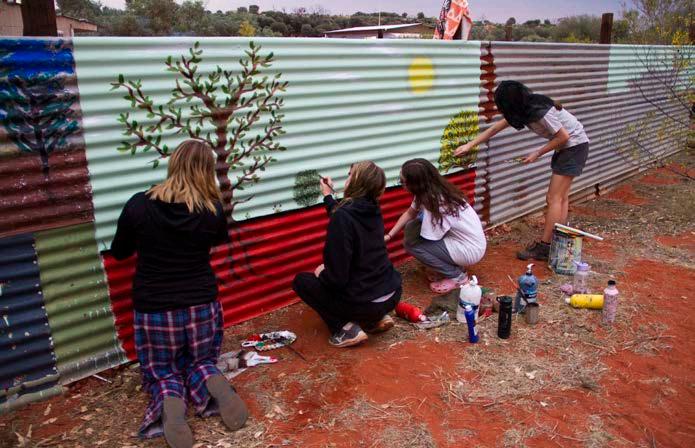
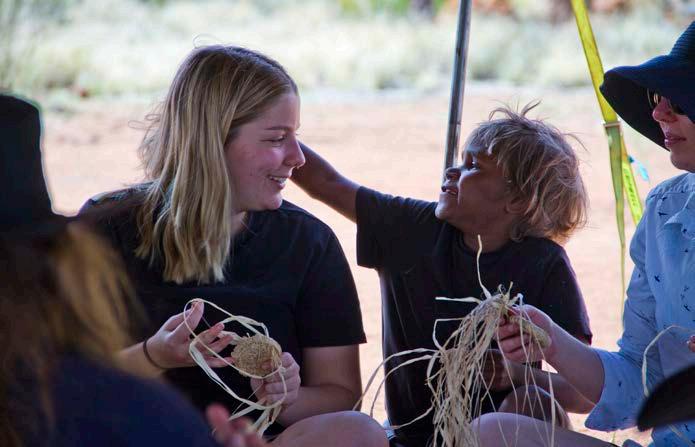
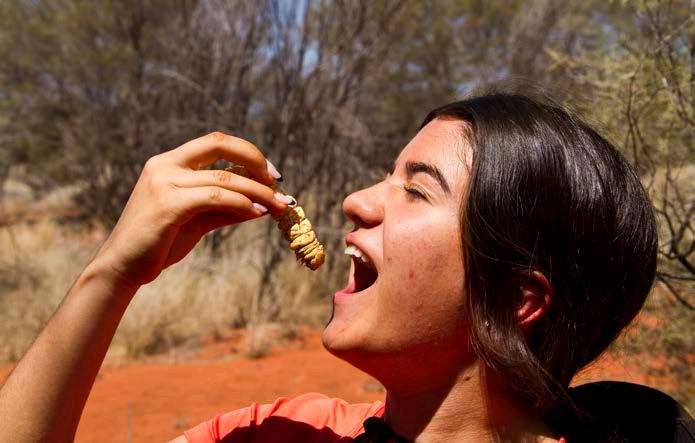

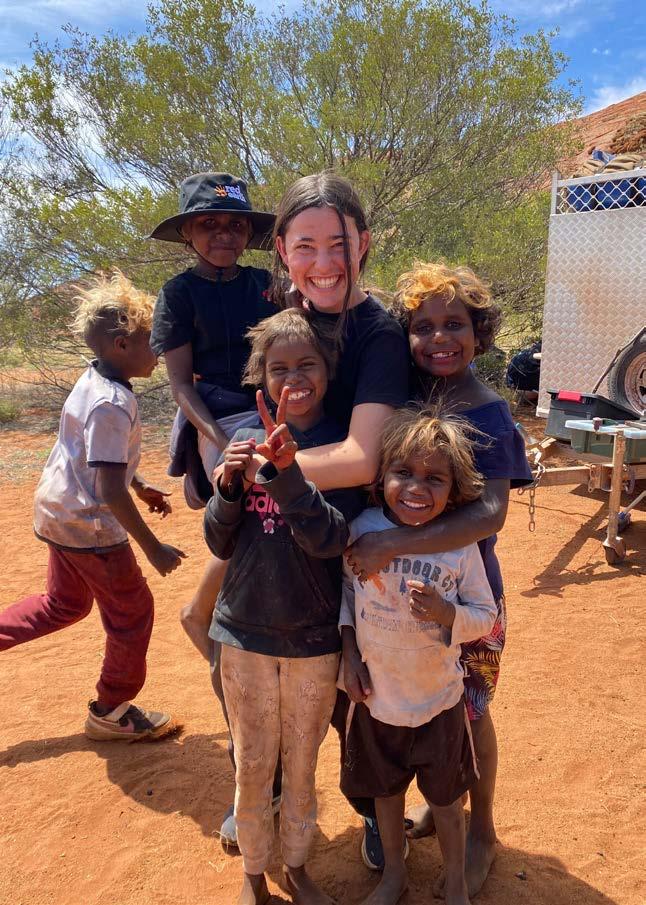
What inspired you to participate in Indigenous Immersion? After learning about Indigenous spirituality last year in our Religion and Ethics course I realised that I was very interested in, and had a deep respect for, Indigenous culture. I decided to attend the Immersion trip in the hopes of gaining a more personal experience and knowledge about the traditional owners, in particular the Kurku and Fregon people. How would you describe your experience? My experience on the Immersion trip was both humbling and unforgettable. It is easy to forget the security, advantages and comfort that I have in my own life. When I went on the Immersion trip, I was humbled to see how fulfilled, grateful, and welcoming the Indigenous people are, despite the discrimination they face... My experience was also truly unforgettable. The Immersion is not just a regular holiday, it is a rare opportunity to be welcomed onto homeland and taught by the Traditional Owners of our country. I learned about their personal stories, and I was shown how to hunt for witchetty grubs, weave baskets, speak Pitjantjatjara and much more. The connections that we made, and the lessons we learned will remain with us forever.
Karina Harrison (Year 11)

What was the most surprising thing about the experience? I did not expect the Traditional Owners to be so welcoming to our group and so willing to share their culture. Despite the discrimination Indigenous Australians face, they were so content with what they have and were always smiling. I knew I was interested in learning their culture and traditions but once I was there, I was more curious than ever. Now that I am home, I am researching to learn more. Bree Riddell (Year 11) What did you learn from the experience? It put things into a new perspective for me. Spending time with the Traditional Owners helped me to realise the things that are significant and important to me. I also learned how I can help to be a voice for Indigenous Australians who don't have one and to stand up for inequality. What was your favourite part of the trip? My favourite part was travelling to Uluru to see the beautiful rock up close for the first time and hearing the stories from the Dreamtime that have been taught to Indigenous people for many generations. I also enjoyed being able to see the cave paintings and geographical structures of this culturally significant formation.
Henry Wright (Year 10)
Please share some highlights of the trip It’s hard to name one particular highlight as the whole trip was one big highlight reel. At Kurku, the first place we stayed, the Traditional Owners, John and Lorraine, opened their hearts and minds to us, allowing us to ask some quite hard-hitting questions and giving some impactful responses. They also showed us how to find witchetty grubs and how to make clapsticks—two very informative and enjoyable experiences. The second homeland we stayed at, Kaltjiti (also known as Fregon), provided us with a different perspective on the Indigenous experience. Here we engaged with children who spoke limited English, but that didn’t deter any of us. We partook in traditional dances and ceremonies and gained an insight into a more authentic way of living. The landscape was the scenic backdrop to all our experiences with the local people. Watching the sunrise over the landscape in Kaltjiti, seeing the waterfalls run down the sides Uluru after rare rain, and hiking along the gorges in Kings Canyon were all highlights.









